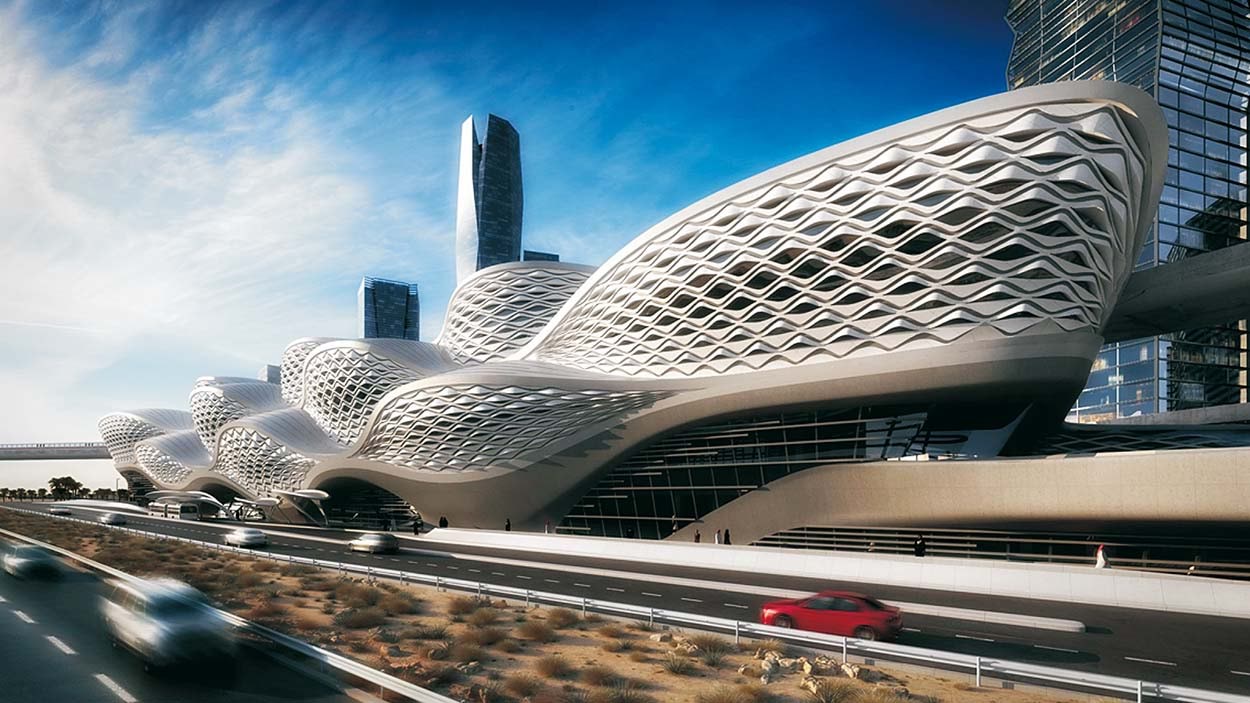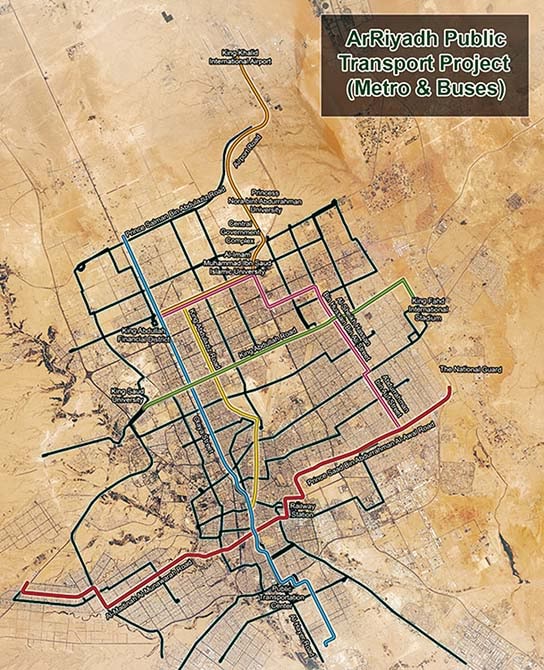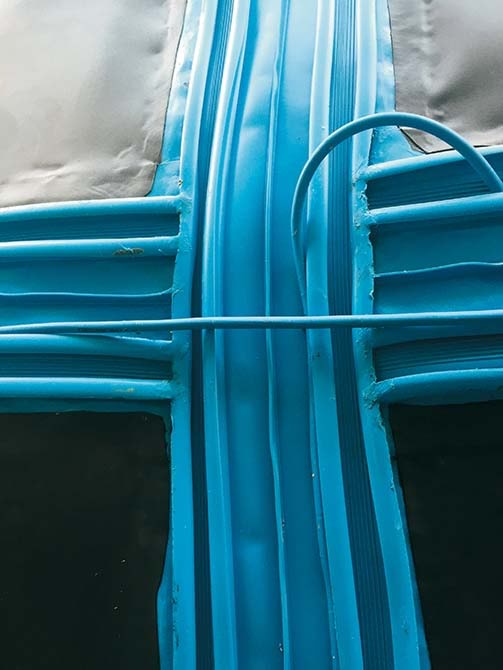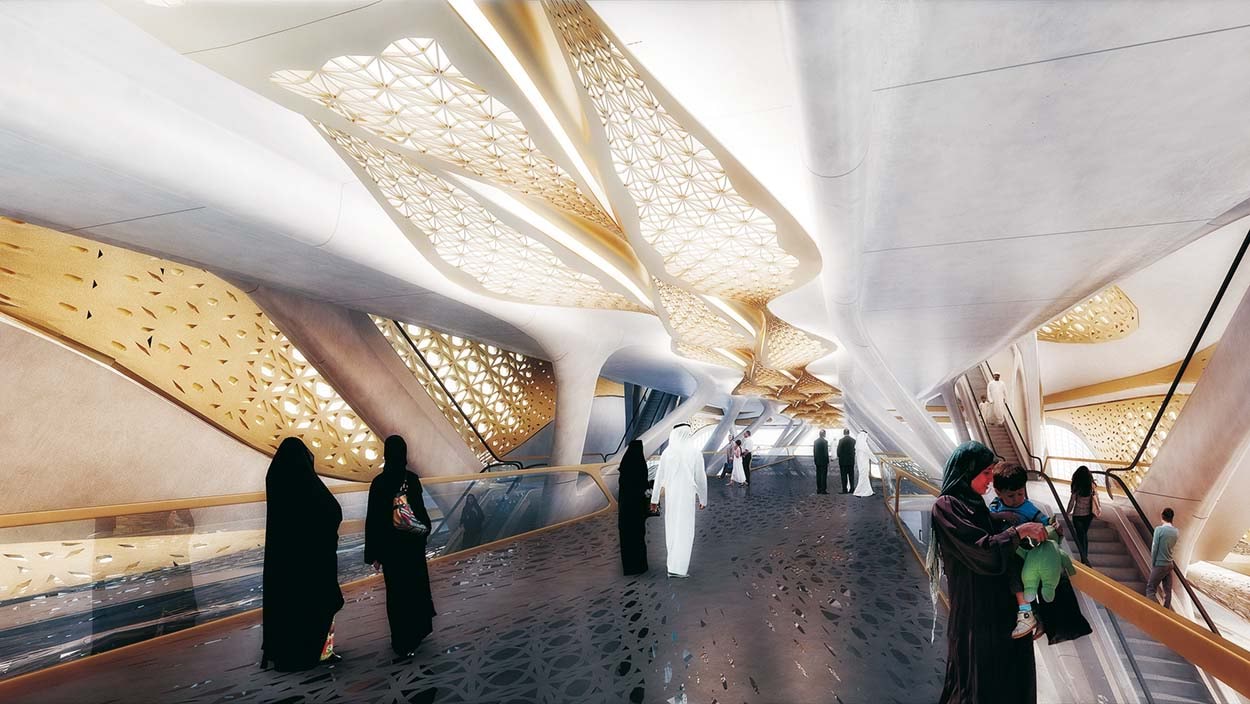
Riyadh Metro in Saudi Arabia
A complex site requiring innovative Mapeplan waterproofing membranes.
Riyadh is the capital and most populous city of Saudi Arabia. Estimates suggest that the number of Riyadh’s population will grow from about 6 million to more than 8.5 million over the next 10 years. This will require effective ways to meet the needs of the city including those of transportation.
Riyadh is the capital and most populous city of Saudi Arabia. Estimates suggest that the number of Riyadh’s population will grow from about 6 million to more than 8.5 million over the next 10 years. This will require effective ways to meet the needs of the city including those of transportation.
One of the most impressive one is the Riyadh Metro, the biggest urban mass-transit system that has ever been created from scratch, which is expected to be completed by the end of 2018. This rapid transit system will serve the city and consist of 6 metro lines spanning a total length of 176 km with 85 stations. The project cost 22.5 billion US dollars.
The new metro system will play a key role for the city’s practicability, reducing traffic congestion and pollution, since it will allow to limit the number of vehicles present on the city’s streets, creating a sustainable and efficient means of transport. It is expected to be the backbone of the city’s public transport system as it will integrate with an 85-km three-line bus rapid transit (BRT) network.
In June 2013, a shortlist of 3 major global consortia was chosen to build the metro. Contracts were awarded in July 2013, with construction planned to start in 2014 and be completed in 4 years. The ground-breaking ceremony was celebrated on April 4, 2014.
The Riyadh underground railway system is currently being built by numerous construction companies. Apart from the consortium working on the main lot described in this article – Arriyadh New Mobility (ANM), led by the Italian contractor Salini-Impregilo – the other groups include some of the most important contractors from around the world: the BACS consortium, led by the Bechtel, Al Mabani, SCCC and Siemense groups, and Fast Consortium, led by, amongst others, FCC Construction, Freyssinet Saudi Arabia, Samsung, Strukton Civiel and Alstom.
THE PROJECT FOR LINE 3
Line 3 (Orange Line), which is being executed by the Salini Impregilo/Larsen & Toubro/ Samsung joint venture, runs for 41.58 km, starting from the west (near the Jeddah Expressway) and ending in the east (near the National Guard Camp of Khashm El Aam), for a total of 22 stations. Most of the line runs underground through the area known as “old Riyadh”. The trains that will run on it will have a maximum length of 36.7 m (2 carriages), a capacity of 267 passengers and a maximum speed of 100 km/h.
The Impregilo-Salini group is responsible for all the civil works along with Larsen&Toubro and Nesma, while Ansaldo STS works on the technological aspects.
The intervention also includes two large stations with a prestigious design heritage: Qasr Al Hokm/Downtown Station, designed by the Norwegian design studio Snøhetta, and Western station, designed by the Omrania architectural studio, which will also act as an interchange, including four public levels and a two-storey underground carpark.
MAPEI AT THE BASIS OF THE METRO
Mapei became involved in this building project during the design phase. The company’s Technical Services worked closely with the Salini Impregilo and Larsen & Toubro design team to develop a waterproofing system that could meet all the specified requirements and that could be applied directly on site.
The project was unique in many ways: for instance, the underground stations were all under the ground water table level, with some of them even at a depth of 36-40 m. The ground water was contaminated and highly saline. As the stations were being constructed in extremely congested parts of the city, they required diaphragm wall shoring to support the ground before excavation could be carried out. This was coupled with the fact that all the walls and ground slabs were held in place with tension anchors penetrating into the concrete. These anchors were intended to prevent water pressure from causing the upflit of the structure after completion of the works. A waterproofing system was needed, able to to accommodate a few hundreds of penetrations through it.
The Mapei technicians proposed different waterproofing solutions, able to meet several challenges.
The first challenge was to ensure that the waterproofing products would meet the design life of the structure amounting to 120 years. MAPEPLAN TU S PVC-P membrane was subjected to accelerated ageing tests to prove the long-life expectancy. MAPEPLAN TU S membrane was installed loose laid around the structure and compartmentalized with the highly flexible IDROSTOP PVC BEC ME 32T waterstops every 200 m2. The waterstops also incorporated IDROSTOP MULTI 11 re-injectable hoses in them. This was intended to ensure that, when casting the concrete, any gap could be filled with MICROCEM 8000, micro-fine hydraulic binder with pozzolanic action for ground consolidation and ground waterproofing. This ensured that the leakages in any compartment could be effectively reduced.
The second challenge was to devise a system which would allow the repair of the membrane in case of damage. A double-layer system was designed with MAPEPLAN TU S 20 and MAPEPLAN PVC PROTECTION 15 membranes. These layers were welded at the edges of the compartments to enable injection between the two layers in case of leakage. To facilitate this, MAPEPLAN INJECTION VALVES were installed, 5 in every compartment, to cover the whole surface area of each compartment. These were then filled with MAPEGEL UTT, hydro swelling acrylic resin, to flood the compartment. This resin gels and then swells when it comes in contact with water, thereby keeping the water out of the structure.
The tension anchors penetrating through the slab and the retaining walls posed an immense challenge to the designers, when accommodating the waterproofing system.
A unique solution was found to treat these ground anchors. Collars were fabricated using MAPEPLAN TU S 20 membrane. These collars were filled to one third the depth with MAPEGEL UTT which is a hydrophilic gel. The gel and the collar were then encapsulated with PLANIGROUT 300 ME PCT free-flowing grout to contain the swelling action of the MAPEGEL UTT.
This solution for anchors was used for all the stations of Line 3 including the King Abdullah Financial District Western station and Qasr Al Hokm Downtown Station. The same solution was used for the anchors in the shoring diaphragm walls. The work was slow and time consuming but supplied a perfect solution to stop leakage through the anchors.
This article was taken from Realtà Mapei Middle East & East Africa, no. 01, the magazine published by Mapei Construction Chemicals L.L.C, whom we would like to thank.
For further information see www.mapei.ae, utt.mapei.com and www.polyglass.com.
Riyadh metro in figures
41.58 kmtotal length of Line 3 |
176 kmtotal length of entire metropolitan rail network |
85total number of stations |
|||
|
25.73 kmtrack running on concrete viaducts |
9,73 km
|
|||
4.10 kmtrack running on the surface |
114,00 m2total surface area of multi-storey car parks |
362,000 m2roads and parkland |














